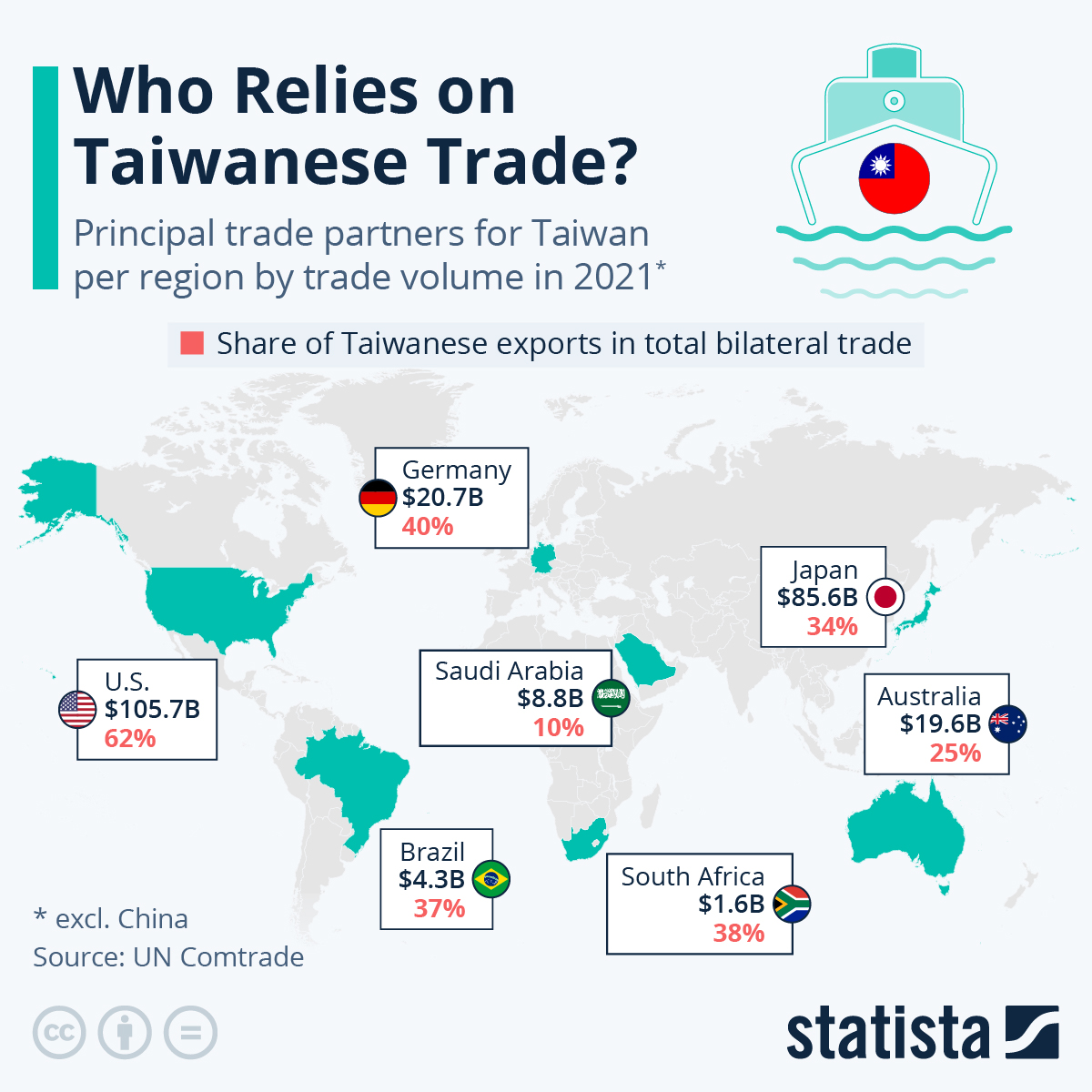
As our chart based on UN Comtrade data shows, 62 percent of the United States' total trade volume with Taiwan came from imports from the island state in 2021.
The United States and Taiwan signed a trade agreement on Thursday to strengthen their economic ties, amid rising tensions with China. The U.S.-Taiwan Initiative on 21st Century Trade hopes to improve customs and border procedures as well as other policies between the two countries. While Washington and Taipei have no formal diplomatic ties, the two governments are connected through unofficial relations and have $105.7 billion dollars in annual trade. The following chart shows that of Taiwan’s principal trading partners, the U.S. is by far the most lucrative relationship, followed by Japan ($85.6 billion) and Germany with ($20.7 billion).
As our chart based on UN Comtrade data shows, 62 percent of the United States' total trade volume with Taiwan came from imports from the island state in 2021. A majority of these goods fell into the IT and electronics sector, with companies like Apple, Qualcomm and NVIDIA relying on chips manufactured in the large-scale semiconductor foundries of Taiwan. In all other countries included on this map, Taiwan was a net importer of goods.
The basis of the tensions between China and Taiwan is the hitherto unresolved question of independence. After the end of the Chinese civil war in 1949, the remaining supporters of the defeated Kuomintang retreated to the island. Once established there, they proclaimed the Republic of China, while the People's Republic sees the island, which is now governed democratically, as its own province. Largely ignored in this equation is the role of Taiwan's indigenous peoples, 16 of whom are officially recognized as ethnic minorities. After a long history of colonization by the Netherlands, Spain, China and Japan, they still made up about 2.4 percent of the population in 2019.
Source: https://www.statista.com